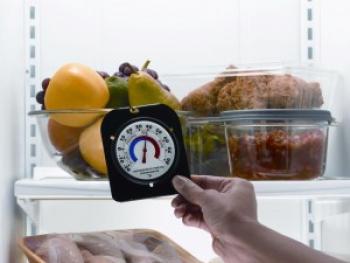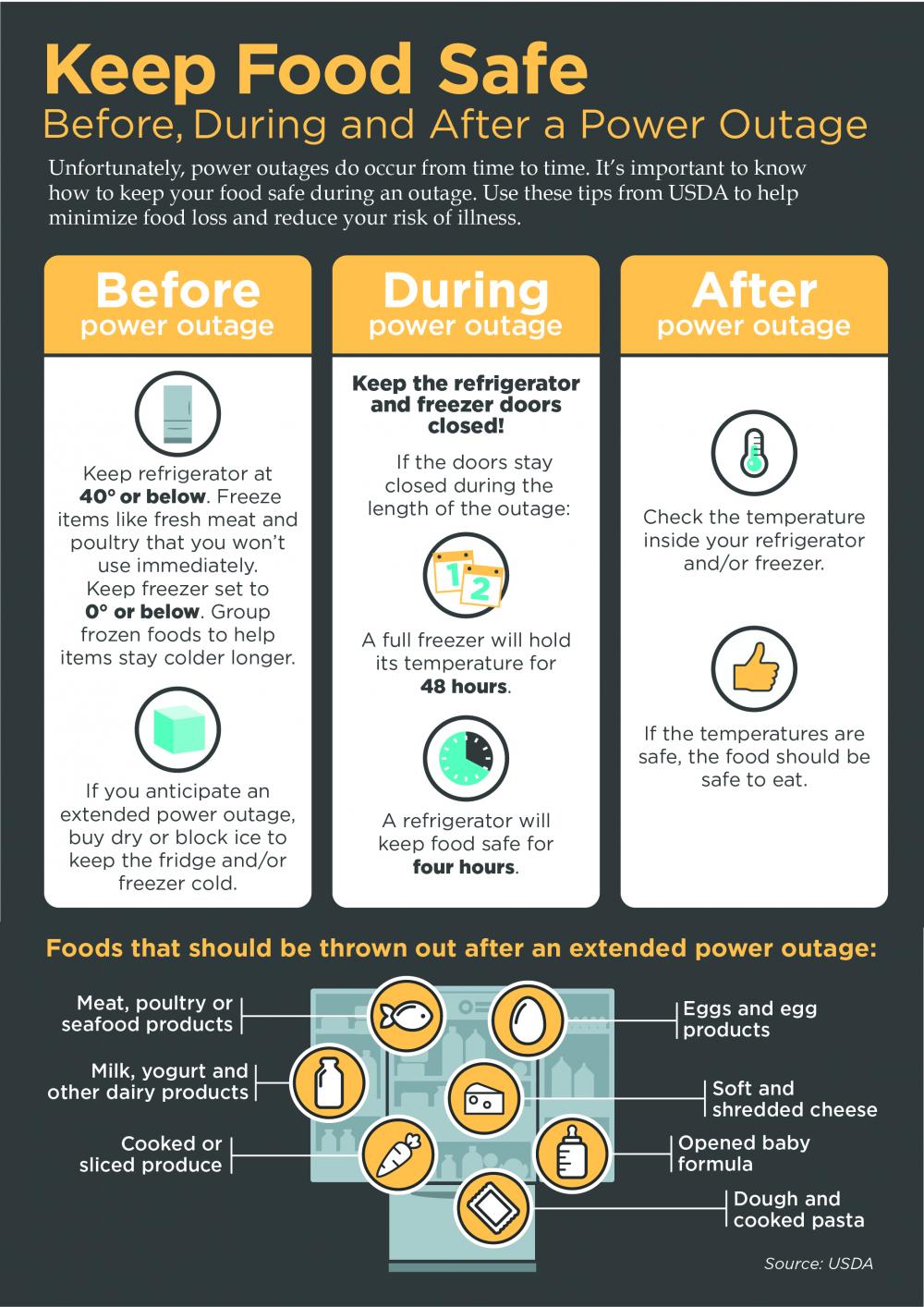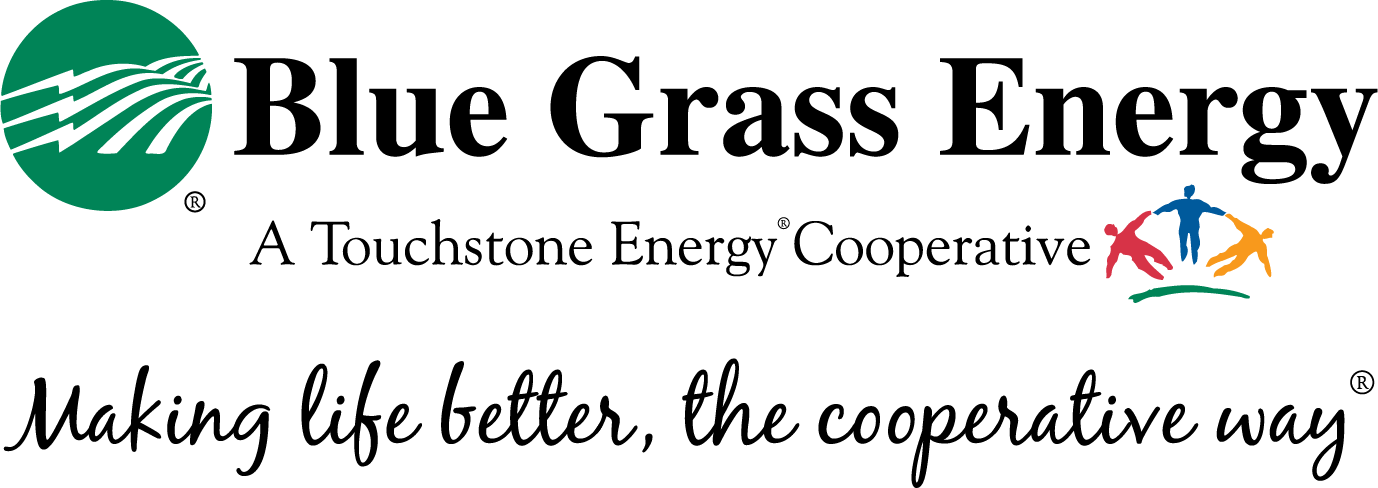Keep Food Safe During a Power Outage

By Scott Gates
We’ve all been there: a summer storm rolls through, toppling trees and damaging power lines. The lights go out. And although it may only be a matter of minutes or hours before Blue Grass Energy gets things up and running again, thawing food in the refrigerator and freezer can make that relatively short time seem like an eternity.
It’s important to keep cold food safe during a power outage, and a little advanced preparation and know-how can keep your family safe from food-borne bacteria. First and foremost, keep your refrigerator and freezer doors closed as much as possible to maintain the cold temperature: if unopened, a refrigerator will keep food safely cold for about four hours; a full freezer will do so for about 48 hours (24 hours if it’s half-full).
A sure-fire way to know if food is safe is to monitor its temperature. Meat, poultry, fish, and eggs should be refrigerated at or below 40 degrees Fahrenheit and frozen food at or below 0 degrees Fahrenheit. If the power goes out, a digital, dial, or instant-read food thermometer and appliance thermometers will help you know if the food remains at safe temperatures.
If the power stays out for a prolonged period, there are a few ways to aid your refrigerator and freezer in the fight to keep things cold. The simplest tip is to keep your freezer full. If it’s not full, group items close together to preserve the cold.
Dry ice can help keep freezers chilly: find it by scanning for “ice” or “carbon dioxide” in the phone book. It will take 25 pounds or so to keep a full, 10-cubic foot freezer safe for three to four days. Fifty pounds of dry ice should hold an 18-cubic foot full freezer for two days. Wear heavy-duty gloves or use tongs when handling dry ice—the temperature of dry ice is -216 degrees Fahrenheit—and separate it from food with cardboard to prevent freezer burn.
During cold months, it may be tempting to store food outside. Although this may work for cold drinks, food can spoil in direct sunlight. Curious animals may also take advantage of an outside stash.
Rather than putting the food outside, consider taking advantage of the cold temperatures by making ice. Fill buckets, empty milk cartons, or cans with water and leave them outside to freeze. Then transfer the homemade ice to your refrigerator, freezer, or coolers.
Power back on? Make sure your food is still safe by either checking its temperature or looking for ice crystals. If frozen food is 40 degrees Fahrenheit or below or ice crystals are visible, it’s safe to refreeze. Discard any perishable refrigerated food (meat, poultry, fish, eggs, and leftovers) that have been above 40 degrees for 2 hours.
Source: U.S. Department of Agriculture, U.S. Food Safety and Inspection Service

